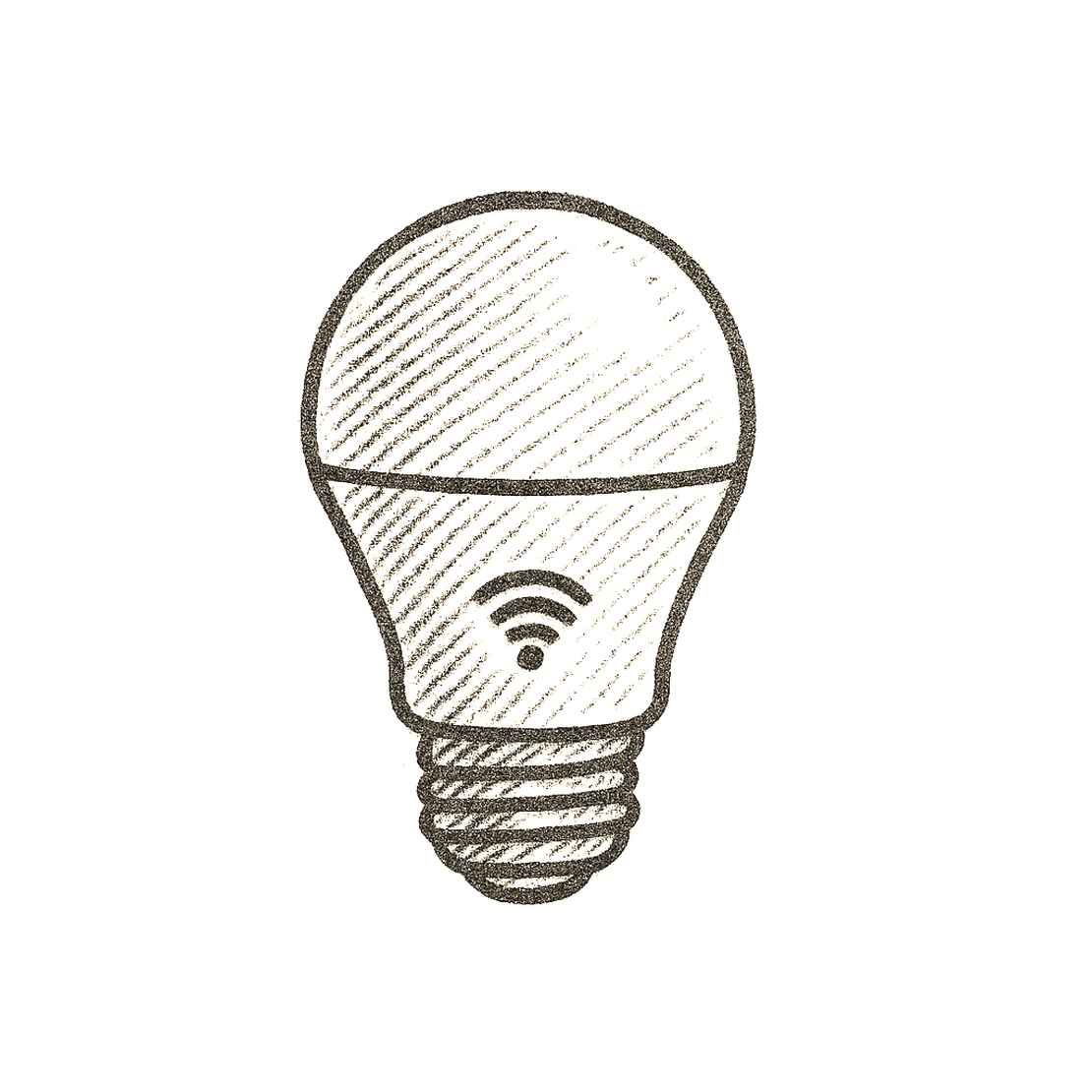
Smart Lights
Smart lights are one of the most popular and accessible components of home automation. They allow you to control the lighting in your home with just a tap on your smartphone, through voice commands, or even automatically based on your daily routines. From enhancing your home’s ambiance to improving energy efficiency, smart lighting systems offer endless possibilities.
The challenge is usually the lightswitch when turning off the switch they dissapear.
How Do They Work?
Smart lights operate using wireless technology to connect to your home network, allowing you to control them remotely. There are several communication protocols that smart lights use to function:
Wi-Fi: Some smart bulbs connect directly to your home’s Wi-Fi network, allowing you to control them via a smartphone app from anywhere with an internet connection. However, Wi-Fi smart bulbs can sometimes slow down your network if you have many devices connected.
Bluetooth: Bluetooth-enabled smart bulbs connect directly to your smartphone, but they have a limited range, typically around 30 feet. This means you can control them only when you’re within range.
Zigbee/Z-Wave: These are low-power, wireless communication protocols specifically designed for smart home devices. Zigbee and Z-Wave bulbs require a hub (such as Philips Hue Bridge or Samsung SmartThings) to connect to your home network. They offer a more reliable connection and less interference compared to Wi-Fi and Bluetooth.
Hub-Based Systems: Some smart lighting systems require a dedicated hub that connects to your router. The hub communicates with the bulbs using proprietary technology or Zigbee/Z-Wave, and you control the system via the hub’s app.
Types of Smart Lights
There are several types of smart lights available, each serving different purposes in your home:
Smart Bulbs: These are the most common type of smart lights. They replace your existing bulbs and can be screwed into standard light fixtures. Smart bulbs come in various shapes, sizes, and color options, including white, tunable white (adjustable color temperature), and full color (RGB).
Smart Light Strips: Light strips are flexible, adhesive-backed LED strips that can be placed under cabinets, behind TVs, or along walls to add accent lighting. They can be controlled and customized just like smart bulbs, offering a wide range of colors and effects.
Smart Lamps: These are standalone lamps that come with built-in smart technology. They’re perfect for desks, bedside tables, or any area where you want a dedicated smart light.
Smart Plugs: While not lights themselves, smart plugs can turn your existing lamps into smart lights. By plugging a lamp into a smart plug, you can control it remotely and set schedules, even if the lamp uses a traditional bulb.
Smart Light Panels: These are modular, customizable panels that can be arranged on your walls to create unique lighting designs. They often come with full color options and can be synced to music or other smart home devices.
How to Choose the Right Smart Lights
Choosing the right smart lights for your home depends on several factors, including your budget, the type of lighting you need, and how you plan to use the lights. Here are some considerations to help you make the best choice:
Compatibility: Ensure that the smart lights you choose are compatible with your existing smart home ecosystem. If you’re using a specific hub or platform like Home Assistant, make sure the lights you select can be integrated seamlessly.
Connection Type: Decide whether you prefer Wi-Fi, Bluetooth, or Zigbee/Z-Wave smart lights. Wi-Fi bulbs are easy to set up but can strain your network, while Zigbee/Z-Wave bulbs require a hub but offer a more stable connection.
Features: Consider what features are most important to you, such as color-changing options, dimming capabilities, or voice control. Some smart lights offer advanced features like music synchronization or motion detection.
Location: Think about where you’ll be placing the smart lights. For example, outdoor smart lights need to be weather-resistant, while light strips are ideal for accent lighting in indoor spaces.
Budget: Smart lights come in a wide range of prices, so determine your budget before making a purchase. While higher-end brands like Philips Hue offer more features and customization, there are plenty of affordable options that still provide excellent performance.
Setup Tips
- Best mounting/placement locations
- Configuring sensitivity, timers, etc.
- Avoiding false triggers
- Platform-specific setup quirks
Nerdage
- Best mounting/placement locations
- Configuring sensitivity, timers, etc.
- Avoiding false triggers
- Platform-specific setup quirks
| Brand / Model | Platform Support | Protocol | Power | Notable Features | Tested | Link |
|---|---|---|---|---|---|---|
| Phillips Hue | HomeKit, HA | Zigbee | Wired (screwed) | Reliable | ✅ | Buy |
